 |
 |
 |
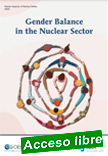 |
Gender Balance in the Nuclear Sector
Nuclear Energy Agency - NEA OECD No. 7583 ¦ Date published: 2023
Female scientists and engineers pioneered the nuclear and radiological fields, with leaders and innovators such as Marie Sklodowska-Curie and Lise Meitner, among many others, establishing the foundation of modern nuclear science and technology. Women continue to make vital contributions to the sector, but their visibility and overall numbers in the sector remain limited, especially in science, technology, engineering, and mathematics (STEM), and leadership roles.
|
The lack of diversity in the sector represents a loss of potential innovation and growth and a critical threat to the viability of the field. This report features the first publicly available international data on gender balance in the nuclear sector. The data was collected from over 8 000 women in the nuclear workforce in 32 countries, as well as human resources data from 96 nuclear organisations in 17 countries. Based on the findings, a comprehensive, evidence-driven policy framework is proposed with practical recommendations.
|
 |
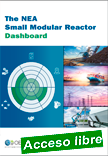 |
The NEA Small Modular Reactor Dashboard
Nuclear Energy Agency - NEA OECD No. 7650 ¦ Date published: 2023
All low-carbon solutions will be required to achieve the world's net zero targets. Nuclear energy has a role to play in meeting this need. A wave of innovation in small modular reactors (SMRs) is advancing quickly with the potential to help decarbonise hard-to-abate sectors. Progress is real and is positioned to accelerate pathways to net zero. SMRs could replace coal on-grid, fossil fuel cogeneration of heat and power for heavy industry, diesel at off-grid mines, as well as producing hydrogen and synthetic fuels.
|
Looking beyond technical feasibility, the NEA SMR Dashboard defines new criteria for assessing real progress in six additional dimensions of readiness: licensing, siting, financing, supply chain, engagement, and fuel. This first edition tracks the progress of 21 SMRs around the world.
|
 |
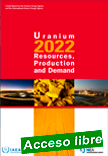 |
Uranium 2022: Resources, Production and Demand
Nuclear Energy Agency & IAEA ¦ OECD NEA No. 7634 ¦ Date published: 2023
Uranium is the main raw material fuelling all nuclear fission reactors today. Countries around the world use it to reliably generate low-carbon electricity, process heat and hydrogen as part of their plans to reduce carbon emissions and increase energy security and supply. There is no nuclear fission power possible – of whatever kind – without uranium.
|
This 29th edition of the “Red Book”, a recognised world reference on uranium jointly prepared by the Nuclear Energy Agency (NEA) and the International Atomic Energy Agency (IAEA), provides analyses and information from 54 uranium producing and consuming countries. The present edition reviews world uranium market fundamentals and presents data on global uranium exploration, resources, production and reactor-related requirements. It offers updated information on established uranium production centres and mine development plans, as well as projections of nuclear generating capacity and reactor-related requirements through 2040.
|
 |
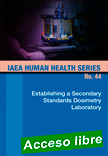 |
Establishing a Secondary Standards Dosimetry Laboratory
IAEA Human Health Series No. 44 ¦ English ¦ STI/PUB/1985 ¦ 91 pages ¦ Date published: 2023
Accurate measurement of radiation dose received by patients undergoing radiotherapy or medical imaging is essential for ensuring effective and safe healthcare. Equally, accurate measurement of radiation dose is required to guide employers in protecting their workforce from the harmful effects of ionizing radiation. Secondary Standards Dosimetry Laboratories (SSDLs) are specialist laboratories used to provide calibration and guidance for end users in hospitals and industry.
|
This publication provides detailed technical information for countries on how to establish an SSDL, including planning processes, cost estimates and timelines. The technical descriptions and guidelines may also be helpful to existing SSDL radiation metrology staff when upgrading calibration facilities or purchasing new equipment.
|
 |
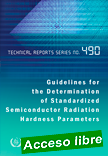 |
Guidelines for the Determination of Standardized Semiconductor Radiation Hardness Parameters
Technical Reports Series No. 490 ¦ English ¦ STI/DOC/010/490 ¦ 89 pages ¦ Date published: 2023
The operational useful lifetime of semiconductor electronic devices working in harsh radiation environments is limited by the structural defects induced by the exposure to ionizing radiation. This has immediate consequences for their use in high radiation environments, for example in nuclear facilities, satellites, radiotherapy, medical diagnostics, security and other industries.
|
This publication establishes a standardized procedure to quantify the radiation hardness of semiconductor diode materials in a way that is independent of the irradiation parameters and biasing conditions of the device. The established parameter reflects the additional free charge carrier trapping cross section induced by the damaging radiation, normalized to the predicted concentration of generated vacancies by the same radiation. The effectiveness of the approach is validated through different types of ion beam irradiations, characterizations and materials used. The work leads towards approaches to predict the radiation induced effects on device performance for more complex electronic structures.
|
 |
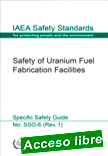 |
Safety of Uranium Fuel Fabrication Facilities
IAEA Safety Standards Series No. SSG-6 (Rev. 1) Specific Safety Guides ¦ English STI/PUB/2015 ¦ 81 pages ¦ Date published: 2023
This Safety Guide provides specific recommendations on the safety of uranium fuel fabrication facilities and describes the actions, conditions and procedures for meeting safety requirements. It deals specifically with the handling, processing and storage of low enriched uranium that has a uranium 235 concentration of no more than 6%, derived from natural, highly enriched or reprocessed uranium.
|
This publication is a revision by amendment of IAEA Safety Standards Series No. SSG-6. It addresses the new safety requirements established by IAEA Safety Standards SSR-4, Safety of Nuclear Fuel Cycle Facilities, which incorporates the lessons learned from the accident at the Fukushima Daiichi nuclear power plant.
|
 |
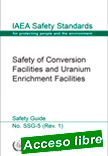 |
Safety of Conversion Facilities and Uranium Enrichment Facilities
IAEA Safety Standards Series No. SSG-5 (Rev. 1) Specific Safety Guides ¦ English ¦ STI/PUB/2038 ¦ 95 pages ¦ Date published: 2023
This Safety Guide, a revision of IAEA Safety Standards Series No. SSG-5, was initiated to provide recommendations on site evaluation, design, construction, commissioning, operation and preparation for decommissioning of conversion facilities and uranium enrichment facilities to meet the applicable requirements established in IAEA Safety Standards No. SSR-4, Safety of Nuclear Fuel Cycle Facilities, which incorporates the lessons learned from the accident at the Fukushima Daiichi nuclear power plant.
|
The revised Safety Guide also reflects current operational practices at conversion facilities and uranium enrichment facilities. The recommendations in this publication are aimed primarily at operating organizations of conversion facilities and uranium enrichment facilities, regulatory bodies and designers.
|
 |
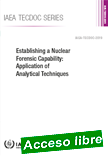 |
Establishing a Nuclear Forensic Capability: Application of Analytical Techniques
IAEA-TECDOC-2019 ¦ 78 pages ¦ Date published: 2023
Nuclear forensics supports national nuclear security measures and criminal investigations by providing information on the identity, origin and history of nuclear or other radioactive material found out of regulatory control. This publication provides information for States on the use of nuclear forensics in response to criminal or other unauthorized acts involving nuclear or other radioactive material, based on the guidance provided in IAEA Nuclear Security Series No. 2-G (Rev. 1), Nuclear Forensics in Support of Investigations.
|
It is intended for technical and non-technical personnel responsible for developing nuclear forensic analytical capabilities within the context of a broader national nuclear forensic programme stemming from national legislation. It provides technical information that describes the application of specific methods, analytical techniques and technical expertise used for nuclear forensic analysis in support of investigations of criminal or other unauthorized acts involving nuclear or other radioactive material.
|
 |
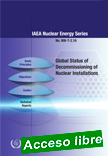 |
Global Status of Decommissioning of Nuclear Installations
IAEA Nuclear Energy Series No. NW-T-2.16 ¦ 125 pages ¦ 71 figures ¦ Date published: 2023
This publication presents the outcomes of a collaborative study to analyse the status of nuclear decommissioning activities around the world as of 2020. Future evolution of these activities was also considered. The information presented is based on responses to a questionnaire distributed to organizations with responsibility for planning, implementation and oversight of decommissioning programmes, with baseline information on the numbers and current operational status of nuclear facilities being extracted from the online nuclear facilities databases maintained by IAEA.
|
Analysis of the collected data was undertaken at global and regional levels, rather than at the level of individual States or facility sites. The publication is intended primarily to be of use to individuals with policy responsibilities in the area of decommissioning and associated waste management activities, including government officials, regulators, facility manages and service providers.
|
 |
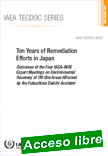 |
Ten Years of Remediation Efforts in Japan: Outcomes of the Four IAEA–MOE Expert Meetings on Environmental Recovery of Off-Site Areas Affected by the Fukushima Daiichi Accident
IAEA-TECDOC-2020 ¦ 192 pages ¦ 37 figures ¦ Date published: 2023
The accident at the Fukushima Daiichi Nuclear Power Plant (NPP) led to the radioactive contamination of large areas. The Government of Japan formulated a programme for the recovery of these areas, including remediation efforts. The objective of the recovery strategy, and therefore of the remediation programme, was to improve the living conditions of the people affected by the accident.
|
At the request of the Government of Japan, the IAEA conducted missions to support the remediation of contaminated areas and evaluate progress. These were followed by four bilateral meetings between IAEA and the Japan Ministry of the Environment (MOE). This publication captures the findings and information obtained during the discussions, including on the decontamination process; waste management; monitoring; stakeholder issues; knowledge management; remediation, recovery and regulatory issues. The publication provides consolidated information on the different topics discussed and lessons learned.
|
 |
| |
|
|

|
|
|
| |
|
|
| |
| |
|
|
| |
| |
|
|
| |
| |
|
|
|
| |
| |
